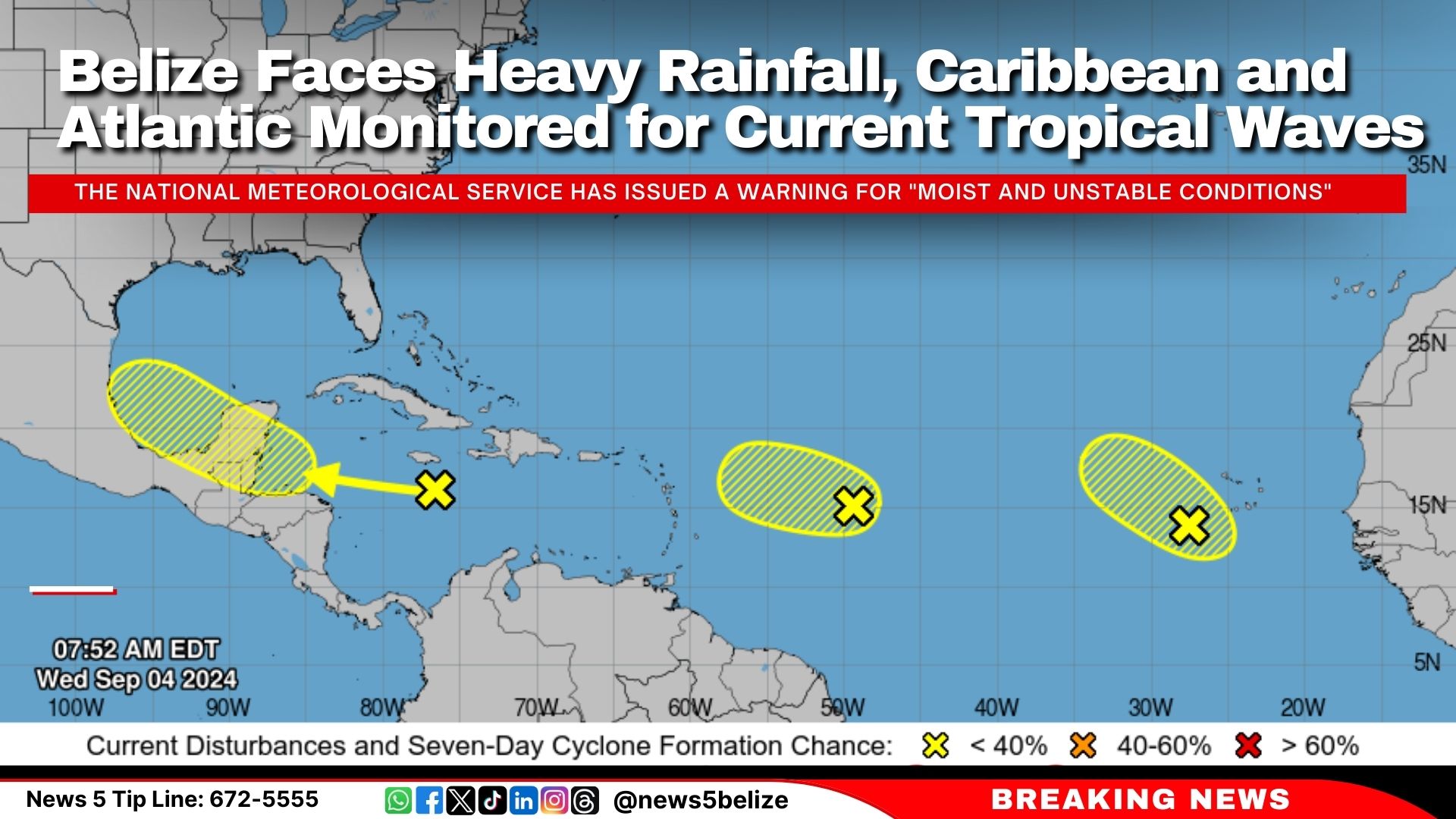This morning, the National Hurricane Center in Miami reported several tropical waves with low chances of development. A tropical wave moving west at 20 mph is generating “disorganised showers and thunderstorms” near southeastern Cuba and Jamaica, with only a 30 percent chance of formation over the next week. Another wave, east of the Lesser Antilles, is showing minimal activity and has a 10 percent chance of significant development. A third wave in the eastern Atlantic is also producing disorganised showers, with a 20 percent chance of slow development in the coming week.
In Belize, the National Meteorological Service has issued a warning for “moist and unstable conditions” expected to continue over the next few days. The 24-hour forecast indicates “mostly cloudy to overcast skies,” with “a few showers, thunderstorms, and periods of rain” impacting northern and central areas today, with increased activity anticipated tonight, especially over the south and coast.
An excessive rainfall watch is in effect due to the potential for heavy rainfall, and small craft operators are advised to exercise caution due to gusty winds and rough seas.
